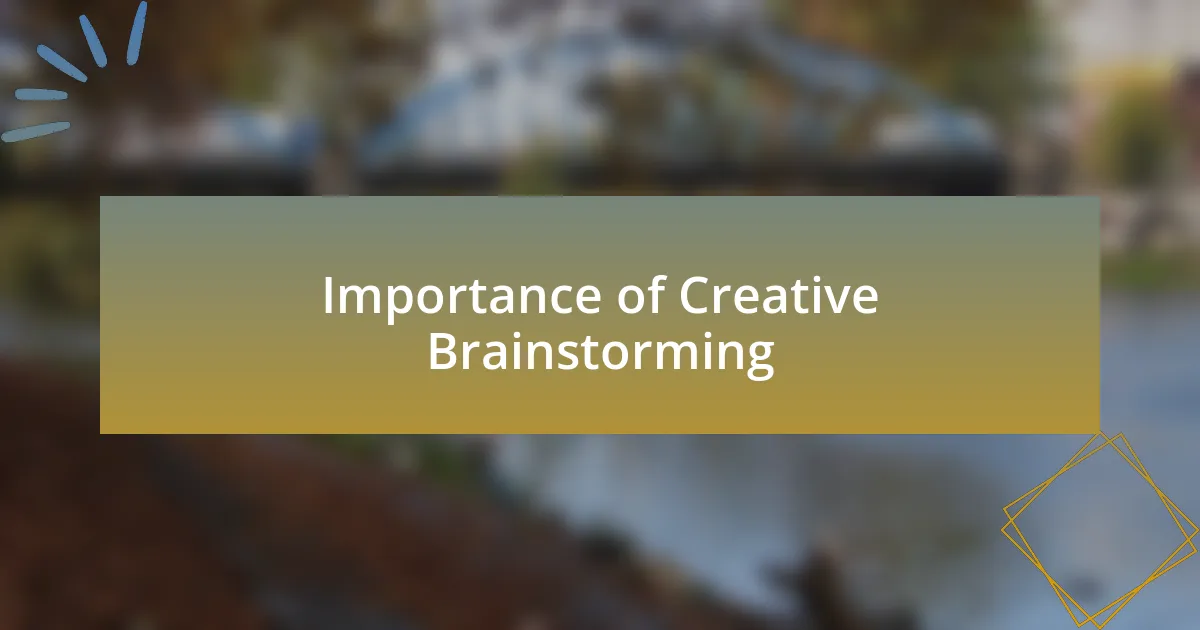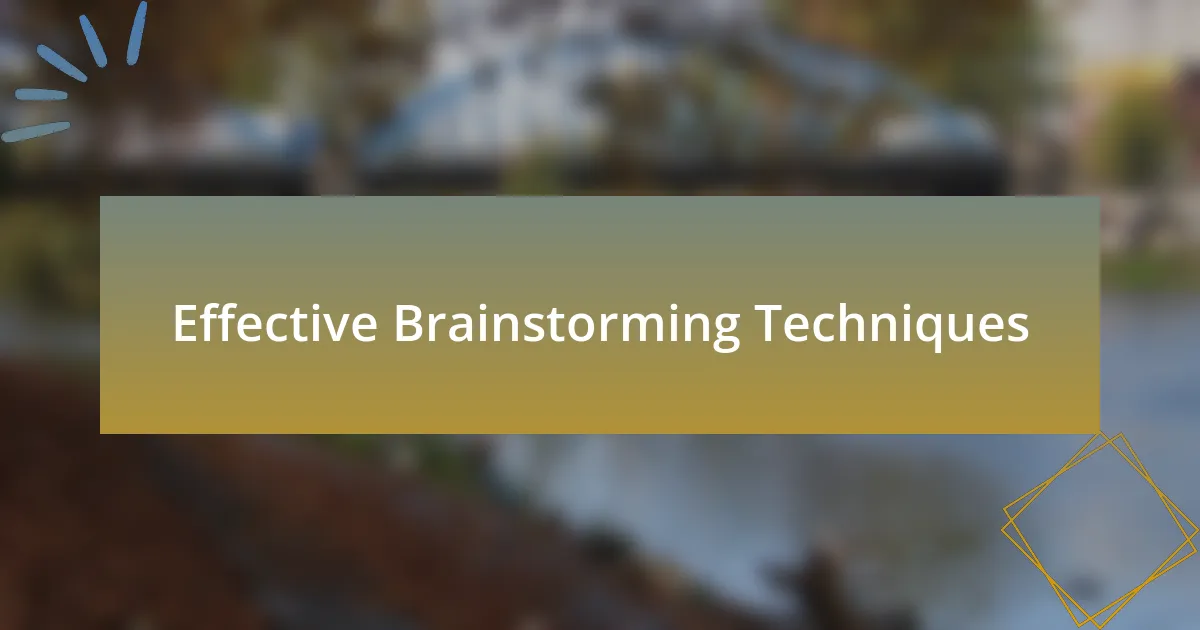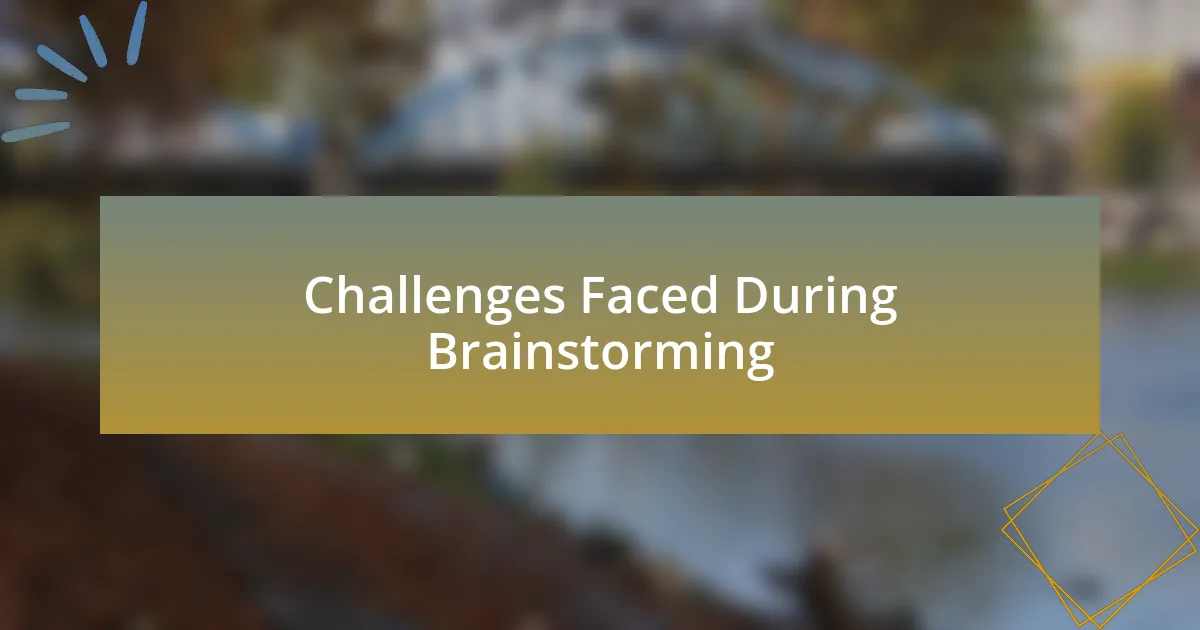Key takeaways:
- Music awards celebrate artists’ contributions, impacting their careers by providing recognition and validation.
- Creative brainstorming fosters innovation and teamwork, allowing diverse ideas to reshape concepts and solutions.
- Effective brainstorming techniques include round-robin and brainwriting, which encourage inclusive participation and creativity.
- Challenges in brainstorming sessions, such as mental blocks and dominant voices, can be mitigated through inclusive practices and open communication.

Overview of Music Awards
Music awards celebrate the artistry and hard work of musicians, recognizing their contributions to the industry. I remember the thrill of watching the Grammy Awards as a kid, captivated by the glamour and excitement of artists being honored for their creativity. It raises the question: what drives these artists to push boundaries and create music that resonates with so many of us?
Each award has its unique criteria and significance, showcasing different genres and styles. For instance, the MTV Video Music Awards focus heavily on the visual component of music, turning videos into a canvas for storytelling. This made me reflect on how sometimes visuals can elevate a song’s message, capturing emotions that words alone may not fully convey.
The impact of these awards extends far beyond the night itself, often shaping the careers of the winners or nominees. Think about how winning an award can transform an artist’s life overnight—financial stability, increased followers, or even a sense of validation. That moment of recognition is not just about the trophy; it represents years of dedication, creativity, and vulnerability in an unforgiving industry.

Importance of Creative Brainstorming
Creative brainstorming is essential because it unlocks a wealth of ideas that can transform a single concept into something extraordinary. I recall a time while organizing a music event; we gathered a diverse group of minds, and the room buzzed with energy as we tossed around wild propositions. That experience taught me just how powerful collective creativity can be, often leading to unexpected breakthroughs that I never would have thought of alone.
Moreover, embracing various brainstorming techniques stimulates different ways of thinking. Have you ever noticed how shifting perspectives can lead to a deeper understanding of a problem? I found that using visual aids, like mind maps, helped me visualize connections I hadn’t seen before, guiding me toward more innovative solutions in planning music awards. Engaging in this process not only sparks fresh ideas but also boosts team morale, fostering collaboration and camaraderie.
Finally, the importance of creative brainstorming lies in its ability to tap into emotions and personal experiences, enriching our connection with the audience. When I brainstorm ideas for award nominations, I think back to the moments when a song truly moved me. Isn’t it fascinating how a simple idea can resonate deeply with others? By drawing from shared emotions and stories during these sessions, we can create awards that truly reflect the heartbeat of the music industry, celebrating not just talent but the feelings that connect us all.

Effective Brainstorming Techniques
Exploring effective brainstorming techniques can truly elevate the creative process, especially in a dynamic field like music awards. One strategy that has worked for me is a structured approach called “round-robin brainstorming.” In one session, I saw how this technique encouraged everyone to contribute their thoughts without fear of judgment. Each person built upon the last idea, creating a chain of creativity that took our project in exciting new directions.
Another method I’ve found invaluable is “brainwriting.” Instead of verbalizing ideas right away, participants write their thoughts down first. This technique is particularly useful in a group of more introverted individuals, where a quieter environment allows for thoughtful contributions. I remember a particular award show planning meeting, where we wrote down our ideas before sharing. The result was a treasure trove of unique insights that may not have emerged in typical discussion.
Lastly, incorporating playful elements can unleash creativity in unexpected ways. I once brought in a deck of cards with prompts related to music genres, asking my team to create mashups based on what they drew. This fun challenge opened doors to innovative concepts for award categories. Have you ever noticed how playfulness can bring out the best ideas? Sometimes, stepping away from the seriousness of planning can yield profound results!

Examples of Successful Brainstorming
One standout example of successful brainstorming occurred during a session for an upcoming music awards theme. I encouraged the team to do a “mind map” on large posters spread across the room. As we visualized connections between different musical elements, I could feel the energy shift. It sparked a flood of ideas—from unique award categories celebrating genre fusions to interactive audience engagement strategies. The atmosphere buzzed with synergy, and it was amazing to witness everyone’s excitement and how the visuals inspired creativity.
On another occasion, we adopted a “reverse brainstorming” session. Instead of focusing on what to include in the awards, we pondered what might annoy or discourage viewers. Surprisingly, this negative spin led us to identify essential features and enhancements for the show that we might have overlooked otherwise. I remember laughing over some of our ridiculous ideas, but in that laughter, we unearthed meaningful insights into viewer experiences. It was a powerful reminder that sometimes looking at things from a different angle can lead to the best solutions.
Lastly, during a laid-back retreat, we tried a scenario-based brainstorming technique. I divided the team into small groups and assigned each a hypothetical challenge related to award nominations. I could see the wheels turning in their heads as they plotted creative solutions. The discussions that unfolded were rich with diverse perspectives, ultimately shaping our nomination process for that year. That experience reaffirmed my belief that when people feel comfortable and even playful, their creativity knows no bounds.

Challenges Faced During Brainstorming
It’s not uncommon to encounter a mental block during brainstorming sessions. I vividly recall a time when our team struggled to generate fresh ideas for a music awards promotional campaign. The room was filled with silence, and I could sense the frustration. I wondered, what do we do when creativity just doesn’t flow? In moments like these, it’s essential to step back and embrace the discomfort instead of pushing through it—it often gives rise to unexpected breakthroughs.
Another challenge that frequently arises is the risk of dominating voices overshadowing quieter contributors. During one session, I noticed that a couple of team members hesitated to share their thoughts, perhaps intimidated by louder voices. This imbalance made me realize the importance of fostering an inclusive atmosphere. I decided to implement a “silent brainstorm” where everyone wrote down ideas individually before sharing, which helped ensure every voice was heard. Have you ever experienced a similar dynamic in group settings? It can be eye-opening when you actively seek out input from everyone, not just the most outspoken.
Lastly, managing differing opinions can lead to tension if not handled correctly. There was a brainstorming session that turned heated when discussing the direction of our awards show. It felt challenging to find common ground among passionate advocates for different styles. But through careful listening and guidance, we learned to collaborate toward innovative solutions rather than fall into the trap of conflict. It’s moments like these where patience truly becomes a virtue; sometimes, the best ideas emerge when we allow space for diverse perspectives to coexist.